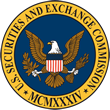In December 2015, the US Securities and Exchange Commission proposed rule 18f-4 limiting the amount of leverage that registered funds could use. Funds could either use a portfolio limit of 150% total exposure or a risk-based limit based on VaR plus a maximum exposure of 300%. The rule would impact 32% of all funds that currently report to the SEC. We review the comment letters that have begun to roll in.
VaR is stupid. We were genuinely surprised to see the use of VaR as the sole risk measurement in the SEC’s proposal, given that it has been discredited pretty much everywhere. Further, the Basel Committee on Banking Supervision has gone so far as to formally propose a challenger model, the Expected Shortfall Method, for measuring market risk instead of VaR. Other commenters picked up on this as well. A letter from the InterContinental Exchange (ICE) noted that:
We strongly believe that the Commission should be more flexible in providing options to funds using a VaR or other risk methodologies under the risk-based portfolio limit in the Proposal and align the Proposal more closely with valuation requirements applied in other contexts, such as those by banking regulators…. If a reliance on a prescriptive type of VaR model under the risk-based portfolio limit remains the focus of the Commission in any approved rule, we agree with the approach taken to require a minimum of three years of data for developing a historical simulation.
Business Development Companies (BDCs) vs. other fund managers. Law firm Sutherland Asbill and Brennan noted that BDCs may be unduly caught up in the new proposed regulation:


